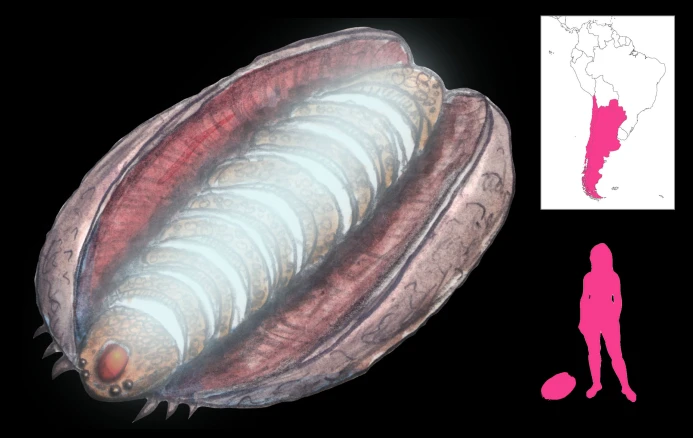Variations: Carbunco, Carbúnculo; Añapitan, Agnapitan; Inuyucoy (Pira); Oñánge-píta (“Devil”, Guarani); Carbuncle, Glow Beast (English)

Carbunclo (Spanish) and carbuncle (English) are both derived from the Latin carbunculus, “little coal”. This has been used historically to refer to the garnet and the ruby, medically to a type of abscess, and teratologically to a glowing South American creature associated with riches.
Sightings of the carbunclo come from the southernmost countries – Argentina, Chile, and Paraguay. Multiple accounts of its appearance are given, and it may vary from area to area. A carbunclo has a shining mirror on its head, like a glowing coal, from which it gets its name. The creature itself produces a bright bluish-white glow from its body, easily distinguishable from wood fires and visible from over a league away. A carbunclo is larger than a mouse, perhaps cat-sized, and has a segmented body shaped like a small corn cob. The light is produced from within and shines out through junctures in the body segments. A bivalved shell resembling a rock is present. If an enemy is detected, the shell clamps shut, extinguishing the light and camouflaging the creature as an ordinary stone. Father Narciso y Barcel wrote in 1791 that the “lid” is covered in exquisite plumage, and there are beautiful spots on its breast. Carbunclos are also capable of leaping and running swiftly. Eulogio Rojas, observing a carbunclo from one meter away in 1879, noted more than four legs. In Chiloé carbunclos guard treasure and are cat-sized quadrupeds with glowing beards on their chins.
Carbunclos move about at night like enormous glow-worms in search of food and water. They have keen senses and are quick to escape or close their shells at the slightest sound. During the drought of 1925, flashing lights were seen descending the hill of Tulahuén to the valley of the Rio Grande; this was interpreted as a family of carbunclos desperate for water.
These glowing creatures have long been sought by miners and prospectors, as they are believed to hold untold riches within their bodies. Nobody as yet has succeeded in capturing one. Martin del Barco Centenera hunted the carbunclo in vain, and said that whoever could obtain the creature’s stone would be assured joy and fortune. By virtue of their excellent camouflage, sharp hearing, and impenetrable habitat, the carbunclos have kept their secrets, and no amount of careful searching has shed further light on them.
References
Aguirre, S. M. (2003) Mitos de Chile. Random House, Editorial Sudamericana Chilena.
Borges, J. L.; trans. di Giovanni, N. T. (1969) The Book of Imaginary Beings. Clarke, Irwin, & Co., Toronto.
Centenera, M. B. (1836) La Argentina o la Conquista del Rio de la Plata. Imprenta del Estado, Buenos Aires.
Cifuentes, J. V. (1947) Mitos y supersticiones (3rd Ed.). Editorial Nascimento, Santiago, Chile.
Oviedo, G. F. (1852) Historia General y Natural de las Indias, v. II: 1. Imprenta de la Real Academia de la Historia, Madrid.
Southey, R. (1812) Omniana, or Horae Otiosiores, v. II. Longman, Hurst, Rees, Orme, and Brown, Paternoster Row, London.
Pingback: MYTHOLOGIES OF argentina – World Mythology
Pingback: MYTHOLOGIES OF ARGENTINA – Indigenous Peoples Literature